How to Choose the Best Offshore Generators
Picking the right offshore generators can feel like a big job. You want something reliable, right? Something that works when you need it most, out on the water. This article will help you figure out what to look for. We’ll go over everything from fuel types to how to keep your generator running smoothly.
Key Takeaways of Offshore Generators
- Think about your fuel: Gasoline or diesel? What makes the most sense for your boat?
- Figure out your power needs: How much power do you actually need? Make sure your generator can handle it.
- Plan for installation: Where will it go? How will it stay cool?
- Look for quiet and clean: Nobody wants a noisy, smoky generator.
- Keep up with maintenance: A little care goes a long way in making your generator last.
Understanding Offshore Generator Fuel Options
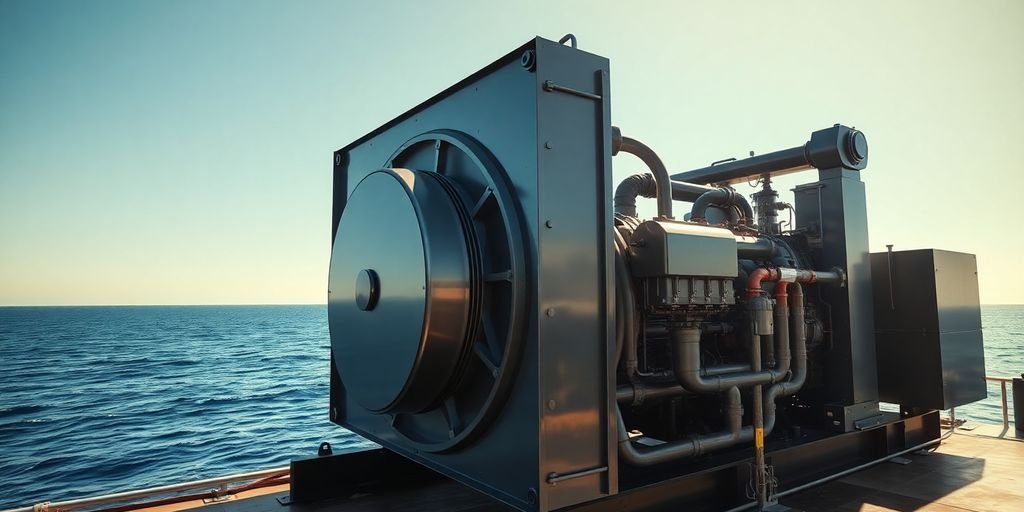
Choosing the right fuel for your offshore generator is a big deal. It impacts everything from how often you need to refuel to the overall safety of your setup. Let’s break down the main options.
Gasoline Versus Diesel Generators
Okay, so the classic showdown: gasoline versus diesel. Gasoline generators are often cheaper upfront, but they tend to be less fuel-efficient than diesel models. Diesel, on the other hand, usually costs more initially but offers better fuel economy and often lasts longer. Plus, diesel is generally considered less flammable than gasoline, which is a significant safety advantage in a marine environment. If you’re looking at diesel generators for a boat, it’s worth considering the long-term costs and safety aspects.
Considering Fuel Compatibility
Think about what fuel your boat already uses. If your main engines run on diesel, sticking with a diesel generator simplifies fuel storage and handling. You won’t need separate tanks or worry about mixing up fuel types. However, if you have gasoline inboards, a gasoline generator might seem convenient, but consider the safety implications, especially in less ventilated areas.
Safety Considerations for Fuel Types
Safety is paramount when dealing with fuel onboard. Gasoline is highly flammable, and its vapors can be explosive. Diesel is less volatile, reducing the risk of fire. Proper ventilation is crucial for both types to prevent the buildup of dangerous fumes. Always follow safety guidelines for fuel storage and handling, and make sure your generator is installed in a well-ventilated area. Also, consider the environmental impact of fuel spills and leaks, and have a plan in place to deal with them.
Choosing the right fuel type isn’t just about cost; it’s about safety, convenience, and the long-term reliability of your offshore power system. Take the time to weigh the pros and cons of each option before making a decision.
Assessing Offshore Generator Power Output
When it comes to offshore generators, getting the power output right is super important. You don’t want to be stuck with a generator that can’t handle your needs, or one that’s way too powerful and wastes fuel. It’s a balancing act, but with a little planning, you can find the perfect fit.
Calculating Total Power Needs
First things first, figure out exactly how much power you need. Make a list of every single electrical device you’ll be running on your off-grid island power. This includes everything from lights and refrigerators to pumps and navigation equipment. Note the wattage of each device – it’s usually printed on a sticker or plate somewhere on the device. Add up all those wattages to get your total power requirement. Don’t forget to account for any devices that have a high startup surge, like air conditioners or some power tools. These can briefly draw much more power than their running wattage.
Matching Generator Output to Demand
Once you know your total power needs, you can start looking at generators. It’s best to choose a generator with a slightly higher output than your calculated demand. This gives you some headroom for unexpected power draws or future additions. Marine generators typically range from 3.5kW to 200kW, so there’s a wide range to choose from. Consider the generator’s continuous output rating, not just its peak output. The continuous rating is what it can reliably deliver over extended periods.
Benefits of Excess Power Capacity
Having a little extra power capacity can be a good thing. It prevents the generator from running at full load all the time, which can extend its lifespan and reduce wear and tear. It also gives you the flexibility to add more equipment later on without having to upgrade your generator. However, don’t go overboard – a generator that’s way too big will be less efficient and more expensive to run. Think of it like choosing a car engine: you want enough power to get the job done, but you don’t need a massive diesel generator if you’re just driving around town.
It’s a good idea to add about 20% to your total power needs when selecting a generator. This provides a buffer for unexpected loads and helps ensure that the generator isn’t constantly running at its maximum capacity. This can improve fuel efficiency and extend the life of the generator. Also, consider a 60FC motor generator set to isolate sensitive electronics from electrical noise.
Here’s a simple table to illustrate:
| Scenario | Total Power Needs (Watts) | Recommended Generator Output (Watts) |
|---|---|---|
| Small Boat | 2000 | 2400 |
| Mid-Size Yacht | 5000 | 6000 |
| Large Offshore Vessel | 15000 | 18000 |
Remember to always consult with a qualified marine electrician to ensure you’re making the right choice for your specific needs.
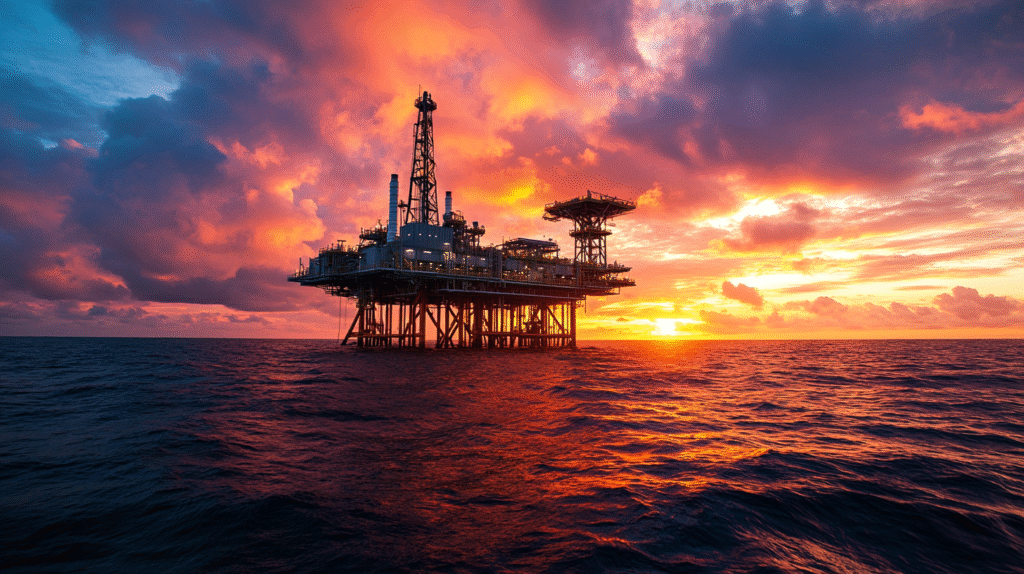
Key Factors for Offshore Generator Installation
Getting your offshore generator installed correctly is super important. It’s not just about plopping it down somewhere; you need to think about a bunch of stuff to make sure it runs well and lasts a long time. Let’s break down the key things to keep in mind.
Ensuring Proper Cooling Systems
Offshore generators can get really hot, really fast. Without a good cooling system, you’re looking at breakdowns and a shorter lifespan for your generator. Most marine generators use water cooling, which means you need a reliable water intake. Make sure the system is properly sized for your generator’s output and that it’s easy to access for maintenance. You don’t want to be stuck trying to fix a clogged intake in the middle of the ocean. Also, think about the type of water you’re using. Saltwater can be corrosive, so you might need special materials or coatings to protect the cooling system.
Preventing Debris Clogging
One of the biggest headaches with offshore generators is debris. Seaweed, barnacles, and other stuff can easily clog up your cooling system, causing the generator to overheat. Regularly cleaning the water intake is a must, but you can also take preventative measures. Install a strainer or filter on the intake to catch debris before it gets into the system. Choose a strainer that’s easy to clean and inspect. Consider a dual-strainer setup, so you can switch to a clean strainer while you’re cleaning the other one. This helps avoid downtime. For remote site electricity solutions, this is especially important.
Strategic Placement Onboard
Where you put your generator on the boat matters a lot. You want a spot that’s well-ventilated to help with cooling and to prevent the buildup of exhaust fumes. It should also be easily accessible for maintenance and repairs. Think about noise and vibration, too. You don’t want the generator right next to sleeping quarters. A good location will minimize the impact on the crew. Also, consider the weight distribution. A heavy generator can affect the boat’s balance, so you might need to adjust the placement of other equipment to compensate.
Proper installation is key to the longevity and reliability of your offshore generator. Take the time to plan it out carefully, and you’ll save yourself a lot of trouble down the road.
Selecting the Best Offshore Generators
Choosing the right offshore generator can feel like a big decision, but it doesn’t have to be overwhelming. It’s about balancing your needs with what’s available and making smart choices for the long haul. Let’s break down some key things to keep in mind.
Prioritizing Low Noise Operation
Nobody wants to be stuck on a boat with a generator that sounds like a jet engine. Noise pollution is a real thing, especially in the confined spaces of a vessel. Look for generators specifically designed for low noise operation. These often have features like sound enclosures and vibration dampening mounts. It’s worth checking the decibel rating (dB) of different models and reading reviews to see what other users say about the noise level. A quieter generator makes for a much more pleasant offshore experience. You might want to consider a 50 amp generator for a quieter operation.
Minimizing Emissions for Safety
Emissions are a serious concern, especially in enclosed environments. Carbon monoxide (CO) is a silent killer, and you want to minimize the risk as much as possible. Opt for generators that meet or exceed emission standards. Look for certifications from organizations that test and verify emission levels. Also, make sure your boat has properly functioning CO detectors and that you test them regularly. It’s not just about the environment; it’s about the safety of everyone on board.
Choosing Reliable Marine Generators
Reliability is non-negotiable when you’re out on the water. You don’t want your generator to fail in the middle of nowhere. Here’s what to look for:
- Reputable Brands: Stick with well-known manufacturers that have a track record of producing quality marine generators.
- Durable Components: Check the materials used in the generator’s construction. Stainless steel and other corrosion-resistant materials are a must for the harsh marine environment.
- Warranty: A good warranty is a sign that the manufacturer stands behind their product. Read the fine print to understand what’s covered and for how long.
Choosing a generator that’s built to last and backed by a solid warranty can save you a lot of headaches (and money) down the road. Don’t skimp on quality when it comes to something as important as your offshore power source. Consider the diesel power generators for a reliable option.
Maintaining Your Offshore Generator

Keeping your offshore generator in top shape is super important. It’s not just about avoiding annoying breakdowns; it’s about safety and making sure you always have power when you need it. Regular attention can save you a lot of headaches and money down the road. Let’s get into some offshore generator maintenance and repair tips.
Regular Maintenance Schedules
Think of your generator like your car – it needs regular check-ups. Set up a schedule and stick to it. This usually means checking the oil, coolant, and filters regularly. How often depends on how much you use the generator, but a good rule of thumb is to follow the manufacturer’s recommendations. Keep a log of all maintenance performed; this helps track what’s been done and what needs doing. For example, routine maintenance for marine diesel engine generators depends on running hours and OEM recommendations, typically every 250-500 hours for filters and oil checks.
Here’s a simple maintenance schedule example:
| Task | Frequency |
|---|---|
| Oil Change | Every 250 hours |
| Filter Check | Every 250 hours |
| Coolant Level Check | Weekly |
| Battery Inspection | Monthly |
| Visual Inspection | Before each use |
Troubleshooting Common Issues
Even with the best care, things can still go wrong. Learn to recognize the common signs of trouble. Hearing strange noises? Noticing voltage fluctuations? Could it be your diesel power generator starting up? Knowing what to look for can help you catch small problems before they become big ones. Keep a basic toolkit onboard with things like wrenches, screwdrivers, and spare fuses. Also, having a multimeter can be a lifesaver for electrical issues.
Extending Generator Lifespan
Want your generator to last? Treat it well! Proper maintenance is key, but there’s more to it. Make sure it’s installed correctly with adequate ventilation to prevent overheating. Protect it from the elements as much as possible. And don’t overload it – that puts extra strain on the engine and can shorten its lifespan. By following these tips, you can keep your generator running smoothly for years to come.
Regular maintenance is the single best thing you can do to extend the life of your offshore generator. It’s about more than just fixing problems; it’s about preventing them in the first place. A little bit of effort can save you a lot of money and downtime.
Types of Offshore Generators
Diesel Power Generators
These are probably the most common type you’ll find. Diesel-powered offshore generators for oil rigs are known for their reliability and high power output. They’re workhorses, plain and simple. They can handle heavy loads and run for extended periods, which is super important when you’re far from shore. Plus, diesel is often easier to get in marine environments, making it a practical choice.
Natural Gas Generators
Natural gas generators are becoming more popular, especially with increased focus on cleaner energy. They tend to produce fewer emissions than diesel, which is a big plus. However, accessing natural gas offshore can be a challenge, so it’s not always the most convenient option. Still, for some applications, like direct-drive permanent magnet generators on floating platforms, they can be a solid choice.
Portable Offshore Generators
Think of these as the backup plan. Portable offshore generators for emergency use are smaller and easier to move around. They’re not meant to power an entire rig or vessel, but they’re great for providing power to essential equipment during outages or for smaller jobs. They’re also useful on smaller boats where space is limited. They are a key part of marine power generation.
Choosing the right type really depends on what you need the generator for. Consider the size of your operation, the availability of fuel, and how often you’ll be using it. It’s all about finding the best fit for your specific situation.
Here’s a quick comparison table:
| Generator Type | Fuel | Power Output | Pros | Cons |
|---|---|---|---|---|
| Diesel | Diesel | High | Reliable, high power | Higher emissions |
| Natural Gas | Natural Gas | Medium to High | Lower emissions | Fuel availability |
| Portable | Gasoline/Diesel | Low | Mobile, easy to use | Limited power |
When considering oceanic energy systems, it’s important to think about the long-term costs and environmental impact. While diesel generators have been the standard for a long time, exploring alternatives like natural gas or even hybrid systems can lead to significant savings and a smaller carbon footprint. For best offshore generators for marine vessels, it’s important to consider all options.
Environmental Impact of Offshore Generators
Offshore generators, while providing necessary power, can significantly impact the environment. It’s important to consider these effects and take steps to minimize them.
Reducing Carbon Footprint
One of the biggest concerns is the carbon footprint. Offshore generators, especially those running on diesel, release carbon dioxide, a major greenhouse gas. To reduce this, consider:
- Using generators with improved fuel efficiency.
- Exploring alternative fuels like biodiesel or natural gas.
- Optimizing generator usage to avoid unnecessary operation.
Adhering to Emission Standards
Many regions have strict emission standards for offshore generators. These standards limit the amount of pollutants, such as nitrogen oxides (NOx) and particulate matter (PM), that can be released. Make sure your generator complies with all applicable regulations. This might involve:
- Installing emission control devices.
- Regularly testing emissions to ensure compliance.
- Staying updated on changes to emission standards.
Sustainable Power Solutions
Looking beyond traditional generators, there are more sustainable options to consider. For example, diesel generators can be replaced with:
- Hybrid systems that combine generators with renewable energy sources like solar or wind.
- Fuel cell technology, which produces electricity with minimal emissions.
- Investing in battery storage to reduce generator runtime.
Choosing a generator with a focus on environmental impact is not just good for the planet; it can also lead to long-term cost savings and improved public perception.
Wrapping Things Up
So, picking the right offshore generator might seem like a big deal, but it really just comes down to knowing what you need. Think about how much power you’ll use, what kind of fuel makes sense for your boat, and where you’re going to put the thing. If you keep those main points in mind, you’ll end up with a generator that works well for you and keeps everything running smoothly out on the water. It’s all about making smart choices upfront.
Frequently Asked Questions
What should I consider when buying an offshore generator?
Picking the right generator means thinking about how much power you need, the kind of fuel it uses, how noisy it is, and if it can handle the tough conditions at sea.
Are diesel generators better for boats than gasoline ones?
Diesel generators are often a good choice for offshore use because they are strong, last a long time, and their fuel is safer to store on boats compared to gasoline.
How do I know what size generator my boat needs?
You figure out your boat’s power needs by adding up the power used by all your electrical stuff, like lights, air conditioning, and kitchen appliances. It’s smart to pick a generator that makes a bit more power than you think you’ll need.
How often should I do maintenance on my offshore generator?
To keep your generator running well, you should stick to a regular check-up schedule. This includes changing the oil, checking the filters, and making sure the cooling system is clean.
Is noise level and emissions important for offshore generators?
Yes, it’s really important to choose a generator that doesn’t make too much noise, especially if you’ll be living on the boat. Also, look for models that don’t put out a lot of harmful fumes to keep the air clean and safe.
What are the key things for installing an offshore generator correctly?
Proper installation involves making sure the generator has good airflow for cooling, protecting it from dirt and junk in the water, and finding the best spot for it on your boat.

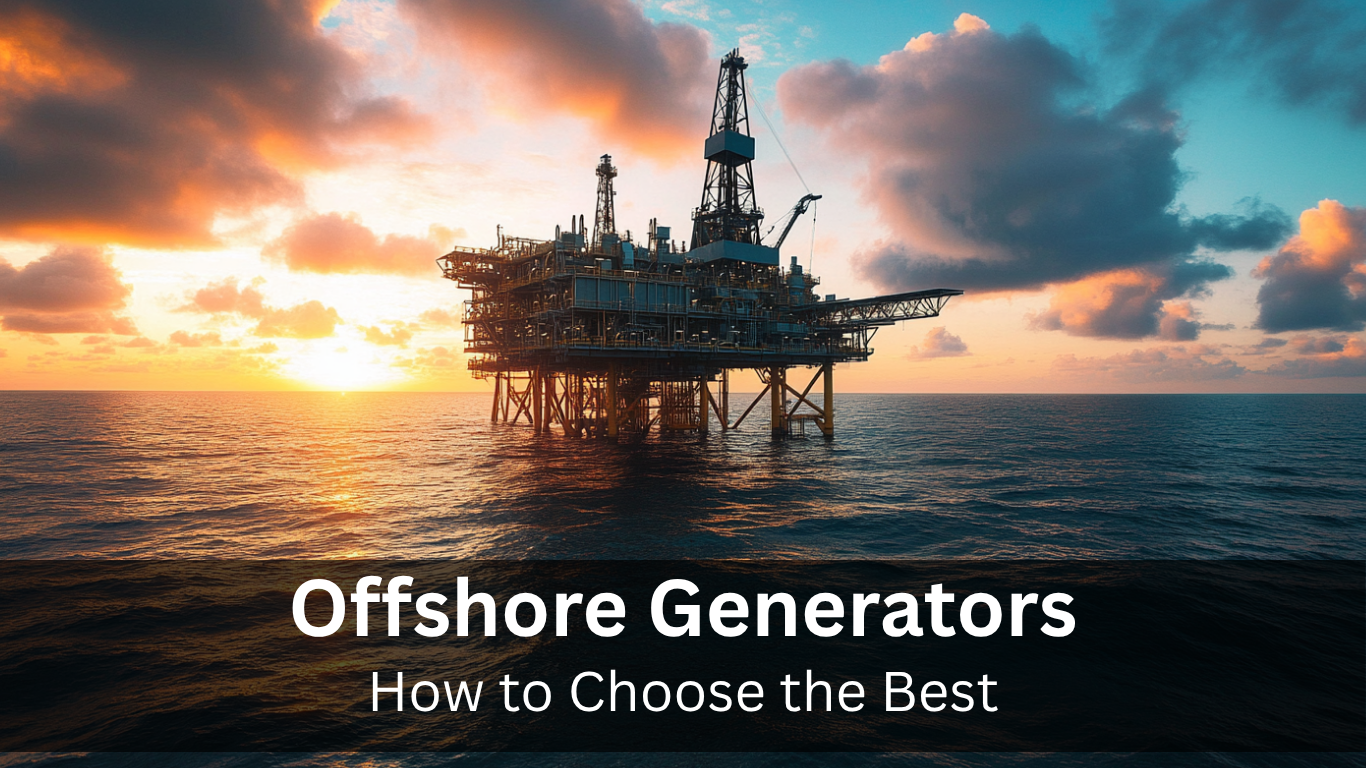
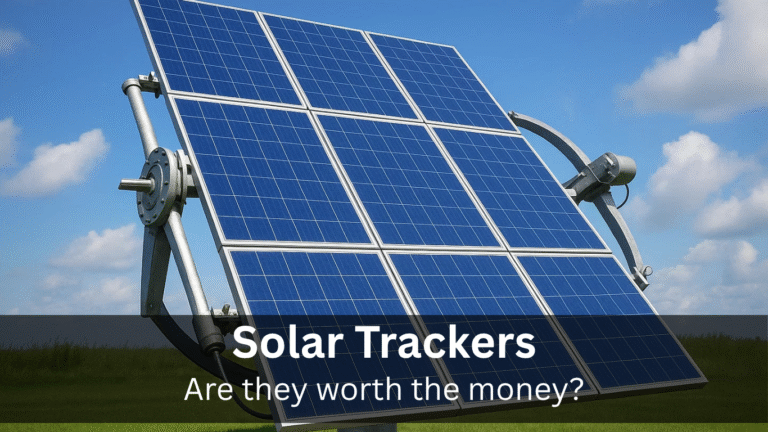
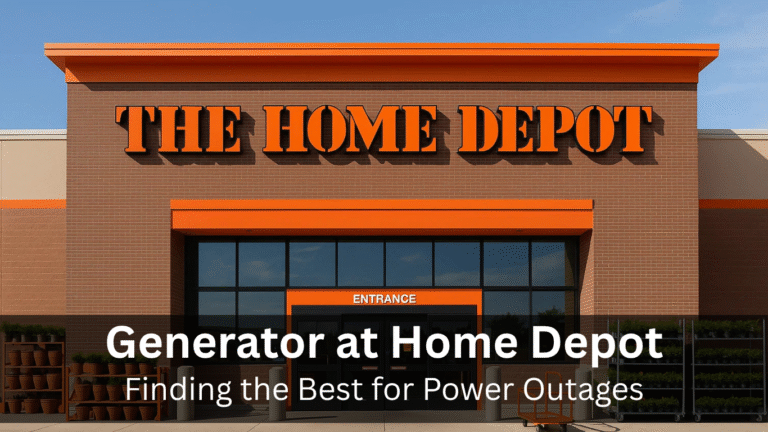
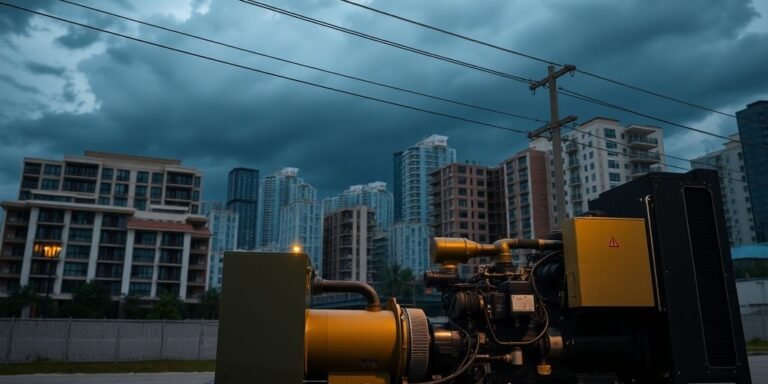

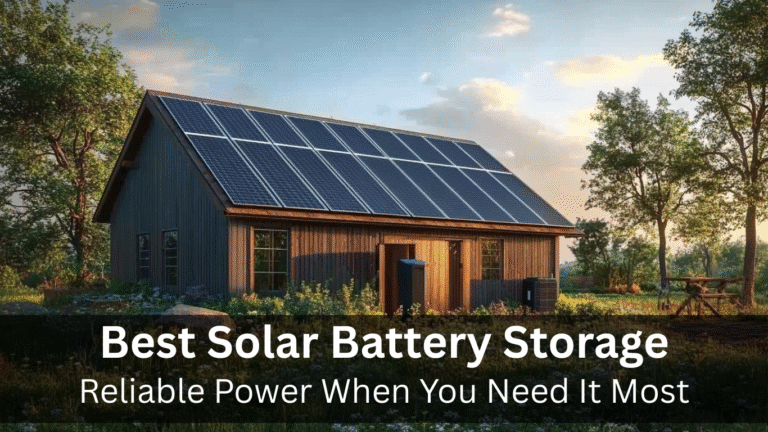
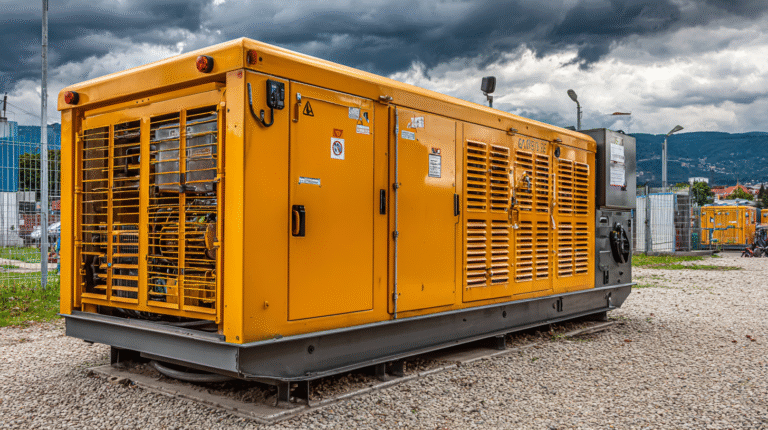

2 Comments